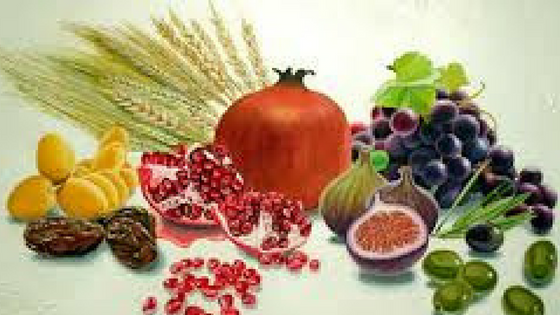@import url(https://www.ratisbonne.org.il/bk/wp-content/plugins/siteorigin-panels/css/front-flex.min.css); #pgc-4171-0-0 , #pgc-4171-0-2 { width:10%;width:calc(10% – ( 0.9 * 30px ) ) } #pgc-4171-0-1 { width:80%;width:calc(80% – ( 0.2 * 30px ) ) } #pl-4171 #panel-4171-0-1-0 { } #pl-4171 .so-panel { margin-bottom:30px } #pl-4171 .so-panel:last-child { margin-bottom:0px } #pg-4171-0.panel-no-style, #pg-4171-0.panel-has-style > .panel-row-style { -webkit-align-items:flex-start;align-items:flex-start } @media (max-width:780px){ #pg-4171-0.panel-no-style, #pg-4171-0.panel-has-style > .panel-row-style { -webkit-flex-direction:column;-ms-flex-direction:column;flex-direction:column } #pg-4171-0 .panel-grid-cell { margin-right:0 } #pg-4171-0 .panel-grid-cell { width:100% } #pgc-4171-0-0 , #pgc-4171-0-1 { margin-bottom:30px } #pl-4171 .panel-grid-cell { padding:0 } #pl-4171 .panel-grid .panel-grid-cell-empty { display:none } #pl-4171 .panel-grid .panel-grid-cell-mobile-last { margin-bottom:0px } }
4th SUNDAY OF THE YEAR
@import url(https://www.ratisbonne.org.il/bk/wp-content/plugins/siteorigin-panels/css/front-flex.min.css); #pgc-4159-0-0 , #pgc-4159-0-2 { width:10%;width:calc(10% – ( 0.9 * 30px ) ) } #pgc-4159-0-1 { width:80%;width:calc(80% – ( 0.2 * 30px ) ) } #pl-4159 #panel-4159-0-1-0 { } #pl-4159 .so-panel { margin-bottom:30px } #pl-4159 .so-panel:last-child { margin-bottom:0px } #pg-4159-0.panel-no-style, #pg-4159-0.panel-has-style > .panel-row-style { -webkit-align-items:flex-start;align-items:flex-start } @media (max-width:780px){ #pg-4159-0.panel-no-style, #pg-4159-0.panel-has-style > .panel-row-style { -webkit-flex-direction:column;-ms-flex-direction:column;flex-direction:column } #pg-4159-0 .panel-grid-cell { margin-right:0 } #pg-4159-0 .panel-grid-cell { width:100% } #pgc-4159-0-0 , #pgc-4159-0-1 { margin-bottom:30px } #pl-4159 .panel-grid-cell { padding:0 } #pl-4159 .panel-grid .panel-grid-cell-empty { display:none } #pl-4159 .panel-grid .panel-grid-cell-mobile-last { margin-bottom:0px } }
Parashat Vayelech
@import url(https://www.ratisbonne.org.il/bk/wp-content/plugins/siteorigin-panels/css/front-flex.min.css); #pgc-4148-0-0 , #pgc-4148-0-2 { width:10%;width:calc(10% – ( 0.9 * 30px ) ) } #pgc-4148-0-1 { width:80%;width:calc(80% – ( 0.2 * 30px ) ) } #pl-4148 #panel-4148-0-1-0 { } #pl-4148 .so-panel { margin-bottom:30px } #pl-4148 .so-panel:last-child { margin-bottom:0px } #pg-4148-0.panel-no-style, #pg-4148-0.panel-has-style > .panel-row-style { -webkit-align-items:flex-start;align-items:flex-start } @media (max-width:780px){ #pg-4148-0.panel-no-style, #pg-4148-0.panel-has-style > .panel-row-style { -webkit-flex-direction:column;-ms-flex-direction:column;flex-direction:column } #pg-4148-0 .panel-grid-cell { margin-right:0 } #pg-4148-0 .panel-grid-cell { width:100% } #pgc-4148-0-0 , #pgc-4148-0-1 { margin-bottom:30px } #pl-4148 .panel-grid-cell { padding:0 } #pl-4148 .panel-grid .panel-grid-cell-empty { display:none } #pl-4148 .panel-grid .panel-grid-cell-mobile-last { margin-bottom:0px } }
Parashat Nitzavim
@import url(https://www.ratisbonne.org.il/bk/wp-content/plugins/siteorigin-panels/css/front-flex.min.css); #pgc-4120-0-0 , #pgc-4120-0-2 { width:10%;width:calc(10% – ( 0.9 * 30px ) ) } #pgc-4120-0-1 { width:80%;width:calc(80% – ( 0.2 * 30px ) ) } #pl-4120 #panel-4120-0-1-0 { } #pl-4120 .so-panel { margin-bottom:30px } #pl-4120 .so-panel:last-child { margin-bottom:0px } #pg-4120-0.panel-no-style, #pg-4120-0.panel-has-style > .panel-row-style { -webkit-align-items:flex-start;align-items:flex-start } @media (max-width:780px){ #pg-4120-0.panel-no-style, #pg-4120-0.panel-has-style > .panel-row-style { -webkit-flex-direction:column;-ms-flex-direction:column;flex-direction:column } #pg-4120-0 .panel-grid-cell { margin-right:0 } #pg-4120-0 .panel-grid-cell { width:100% } #pgc-4120-0-0 , #pgc-4120-0-1 { margin-bottom:30px } #pl-4120 .panel-grid-cell { padding:0 } #pl-4120 .panel-grid .panel-grid-cell-empty { display:none } #pl-4120 .panel-grid .panel-grid-cell-mobile-last { margin-bottom:0px } }
Parashat Ki Tavo
@import url(https://www.ratisbonne.org.il/bk/wp-content/plugins/siteorigin-panels/css/front-flex.min.css); #pgc-4099-0-0 , #pgc-4099-0-2 { width:10%;width:calc(10% – ( 0.9 * 30px ) ) } #pgc-4099-0-1 { width:80%;width:calc(80% – ( 0.2 * 30px ) ) } #pl-4099 #panel-4099-0-1-0 { } #pl-4099 .so-panel { margin-bottom:30px } #pl-4099 .so-panel:last-child { margin-bottom:0px } #pg-4099-0.panel-no-style, #pg-4099-0.panel-has-style > .panel-row-style { -webkit-align-items:flex-start;align-items:flex-start } @media (max-width:780px){ #pg-4099-0.panel-no-style, #pg-4099-0.panel-has-style > .panel-row-style { -webkit-flex-direction:column;-ms-flex-direction:column;flex-direction:column } #pg-4099-0 .panel-grid-cell { margin-right:0 } #pg-4099-0 .panel-grid-cell { width:100% } #pgc-4099-0-0 , #pgc-4099-0-1 { margin-bottom:30px } #pl-4099 .panel-grid-cell { padding:0 } #pl-4099 .panel-grid .panel-grid-cell-empty { display:none } #pl-4099 .panel-grid .panel-grid-cell-mobile-last { margin-bottom:0px } }
Parashat Ki Teitzei
@import url(https://www.ratisbonne.org.il/bk/wp-content/plugins/siteorigin-panels/css/front-flex.min.css); #pgc-4069-0-0 , #pgc-4069-0-2 { width:10%;width:calc(10% – ( 0.9 * 30px ) ) } #pgc-4069-0-1 { width:80%;width:calc(80% – ( 0.2 * 30px ) ) } #pl-4069 #panel-4069-0-1-0 { } #pl-4069 .so-panel { margin-bottom:30px } #pl-4069 .so-panel:last-child { margin-bottom:0px } #pg-4069-0.panel-no-style, #pg-4069-0.panel-has-style > .panel-row-style { -webkit-align-items:flex-start;align-items:flex-start } @media (max-width:780px){ #pg-4069-0.panel-no-style, #pg-4069-0.panel-has-style > .panel-row-style { -webkit-flex-direction:column;-ms-flex-direction:column;flex-direction:column } #pg-4069-0 .panel-grid-cell { margin-right:0 } #pg-4069-0 .panel-grid-cell { width:100% } #pgc-4069-0-0 , #pgc-4069-0-1 { margin-bottom:30px } #pl-4069 .panel-grid-cell { padding:0 } #pl-4069 .panel-grid .panel-grid-cell-empty { display:none } #pl-4069 .panel-grid .panel-grid-cell-mobile-last { margin-bottom:0px } }
Parashat Shoftim
@import url(https://www.ratisbonne.org.il/bk/wp-content/plugins/siteorigin-panels/css/front-flex.min.css); #pgc-4039-0-0 , #pgc-4039-0-2 { width:10%;width:calc(10% – ( 0.9 * 30px ) ) } #pgc-4039-0-1 { width:80%;width:calc(80% – ( 0.2 * 30px ) ) } #pl-4039 #panel-4039-0-1-0 { } #pl-4039 .so-panel { margin-bottom:30px } #pl-4039 .so-panel:last-child { margin-bottom:0px } #pg-4039-0.panel-no-style, #pg-4039-0.panel-has-style > .panel-row-style { -webkit-align-items:flex-start;align-items:flex-start } @media (max-width:780px){ #pg-4039-0.panel-no-style, #pg-4039-0.panel-has-style > .panel-row-style { -webkit-flex-direction:column;-ms-flex-direction:column;flex-direction:column } #pg-4039-0 .panel-grid-cell { margin-right:0 } #pg-4039-0 .panel-grid-cell { width:100% } #pgc-4039-0-0 , #pgc-4039-0-1 { margin-bottom:30px } #pl-4039 .panel-grid-cell { padding:0 } #pl-4039 .panel-grid .panel-grid-cell-empty { display:none } #pl-4039 .panel-grid .panel-grid-cell-mobile-last { margin-bottom:0px } }
Parashat Re'eh
Parashat Re’eh
Parashat Ekev
@import url(https://www.ratisbonne.org.il/bk/wp-content/plugins/siteorigin-panels/css/front-flex.min.css); #pgc-3982-0-0 , #pgc-3982-0-2 { width:10%;width:calc(10% – ( 0.9 * 30px ) ) } #pgc-3982-0-1 { width:80%;width:calc(80% – ( 0.2 * 30px ) ) } #pl-3982 #panel-3982-0-1-0 { } #pl-3982 .so-panel { margin-bottom:30px } #pl-3982 .so-panel:last-child { margin-bottom:0px } #pg-3982-0.panel-no-style, #pg-3982-0.panel-has-style > .panel-row-style { -webkit-align-items:flex-start;align-items:flex-start } @media (max-width:780px){ #pg-3982-0.panel-no-style, #pg-3982-0.panel-has-style > .panel-row-style { -webkit-flex-direction:column;-ms-flex-direction:column;flex-direction:column } #pg-3982-0 .panel-grid-cell { margin-right:0 } #pg-3982-0 .panel-grid-cell { width:100% } #pgc-3982-0-0 , #pgc-3982-0-1 { margin-bottom:30px } #pl-3982 .panel-grid-cell { padding:0 } #pl-3982 .panel-grid .panel-grid-cell-empty { display:none } #pl-3982 .panel-grid .panel-grid-cell-mobile-last { margin-bottom:0px } }
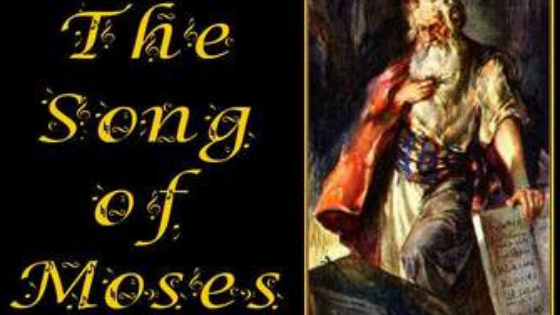
 In my latest commentary on Parashat Balak, I mentioned there how Bro. Jack Driscol encouraged us to try and read the whole Torah Portion for the week. Now to write a commentary on a Parashat, one is asked to read at least five different versions or editions of the Parashat. If one can find the time, it is very interesting and an eye opening in the excavation of words and the text. I find it very interesting, in my level of learning as each edition is different and unique in its form and style. Parashat Ha’azinu has 52 verses. In the Jerusalem Bible, the heading is, “The Song of Moses” (verses 1-44), “The Law, the source of Life” (verse 45-47) and “Moses’ death foretold” (verse 48-52).(JB. Popular Edition pg. 225).
In my latest commentary on Parashat Balak, I mentioned there how Bro. Jack Driscol encouraged us to try and read the whole Torah Portion for the week. Now to write a commentary on a Parashat, one is asked to read at least five different versions or editions of the Parashat. If one can find the time, it is very interesting and an eye opening in the excavation of words and the text. I find it very interesting, in my level of learning as each edition is different and unique in its form and style. Parashat Ha’azinu has 52 verses. In the Jerusalem Bible, the heading is, “The Song of Moses” (verses 1-44), “The Law, the source of Life” (verse 45-47) and “Moses’ death foretold” (verse 48-52).(JB. Popular Edition pg. 225).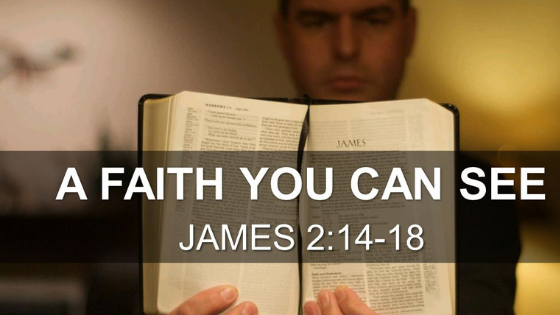
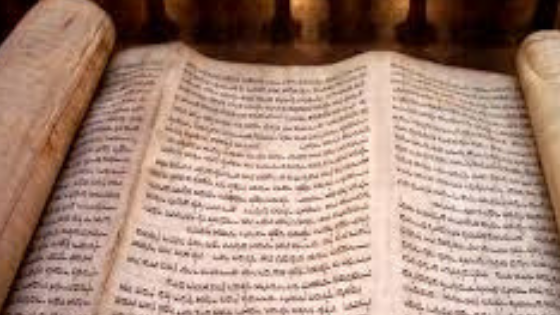
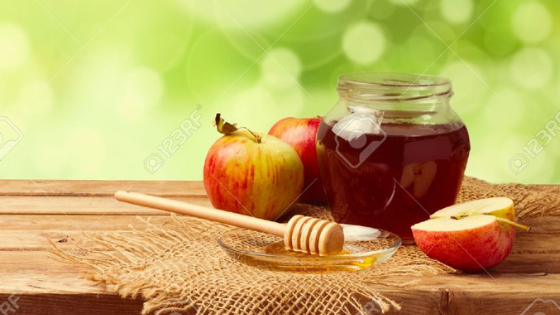
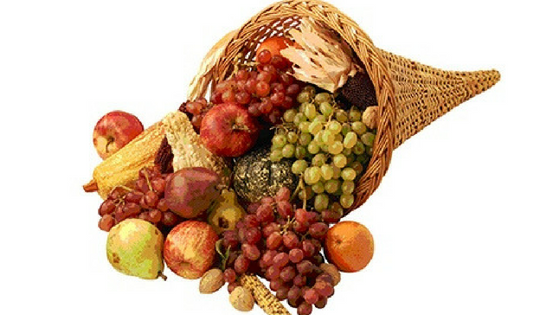
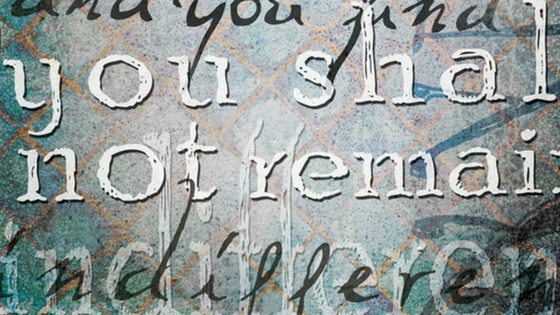

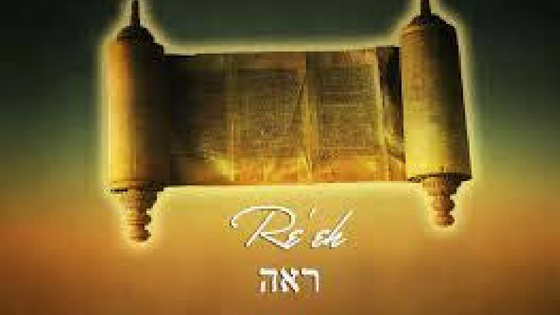
 In Parashat Re’eh, Moses exhorts the Israelites to be obedient as he presents the laws regarding the sanctuary and the rites and festivals celebrated within it. He also instructs them on the laws regarding holiness, idolatry, false prophets, clean and unclean foods, tithes, freeing slaves, among others.
In Parashat Re’eh, Moses exhorts the Israelites to be obedient as he presents the laws regarding the sanctuary and the rites and festivals celebrated within it. He also instructs them on the laws regarding holiness, idolatry, false prophets, clean and unclean foods, tithes, freeing slaves, among others.